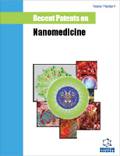Abstract
Chemical reduction technique is one of the easiest methods for synthesizing nickel nanoparticles in low temperature ranges. The patents claimed different types of reducing agents like primary amines, organic amines hydrazine hydrate, sodium borohydride etc. Ether, polyols like ethylene glycol, diethylene glycol and triethylene glycol could be used as solvents and compounds like polyvinylpyrrolidone could be used as capping agent. Present work deals with the synthesis of nickel nanoparticles by chemical reduction technique using hydrazine hydrate as reducing agent. The precursor used in this work was nickel chloride hexahydrate. Typical procedure for hydrazine hydrate reduction route involves dissolving the precursor salt in ethylene glycol, which is followed by the addition of hydrazine hydrate and NaOH to the reaction mixture. The purpose of the sodium hydroxide in the synthesis is to maintain the alkalinity. Ethylene glycol was used as a solvent. The black particles were washed using ethanol and dried in oven at 80 ºC for 3 h. Nickel particles were characterized using X-ray diffraction (XRD) to determine the crystallinity and the crystal size. Crystal size of the particle was determined using Debye-Scherrer equation. Particle size and the morphology of the particles were obtained using scanning electron microscope analysis and elemental composition was analyzed using energy-dispersive X-ray spectroscopy analysis.
Keywords: Capping agents, chemical reduction, ethylene glycol, hexahydrate, hydrazine hydrate, nickel chloride.
Graphical Abstract
 66
66

